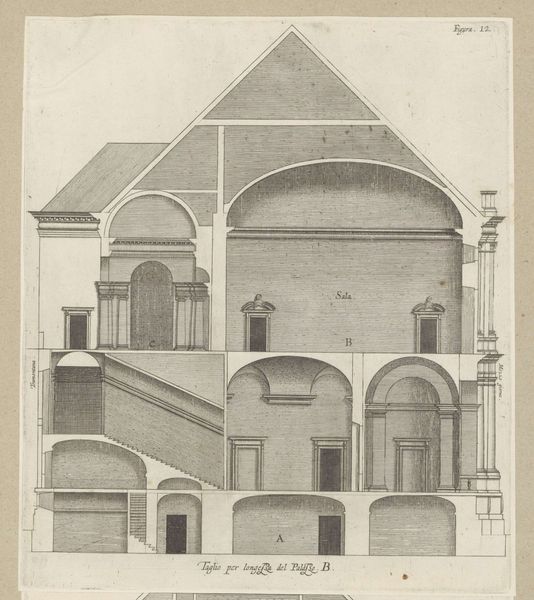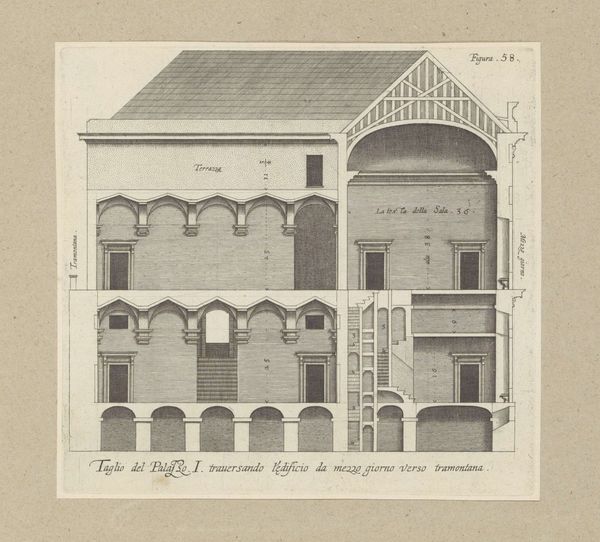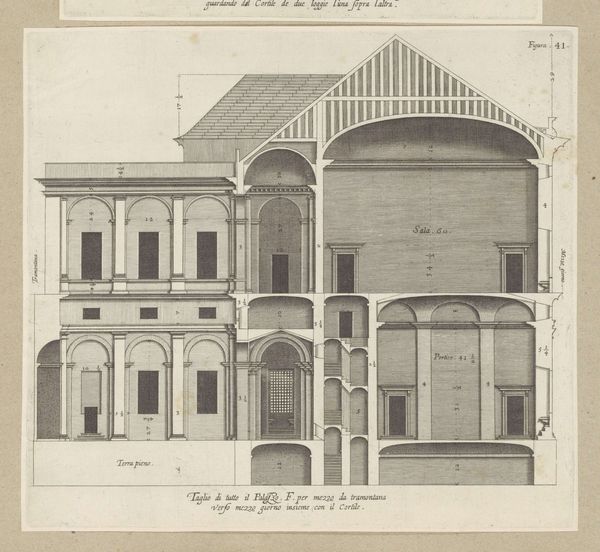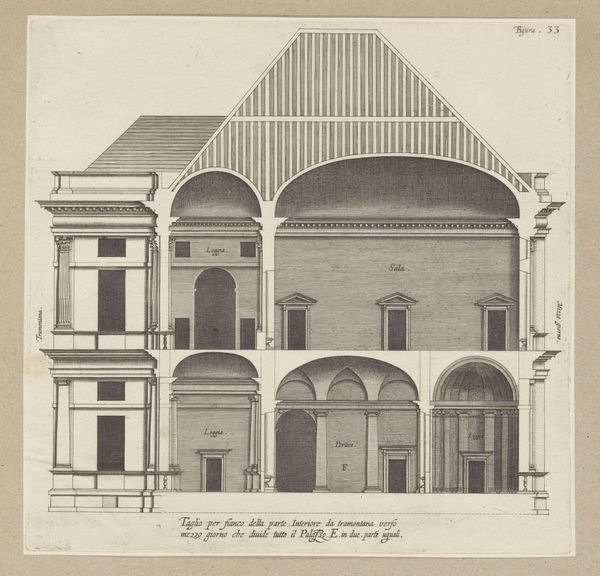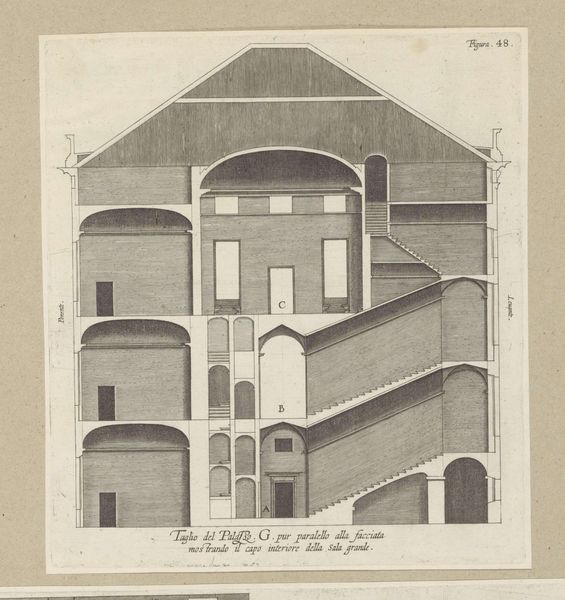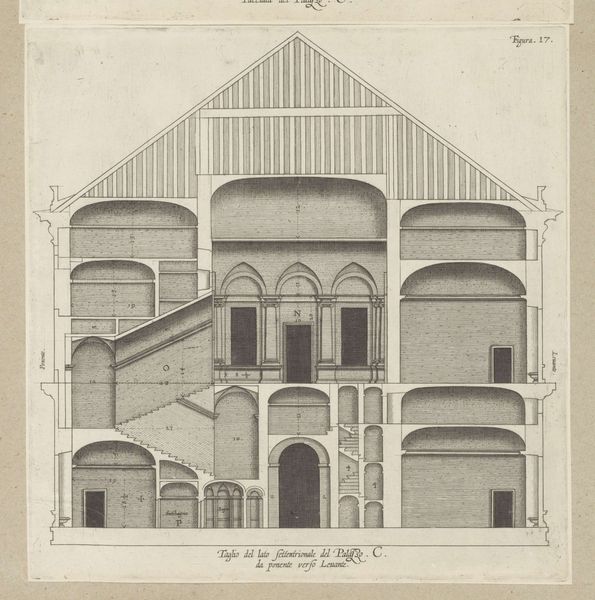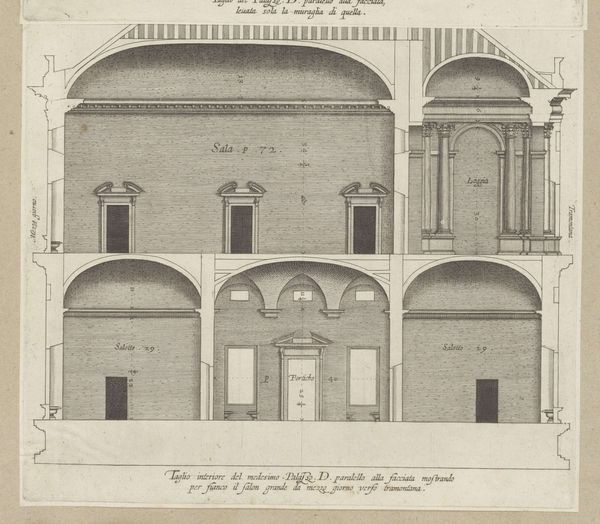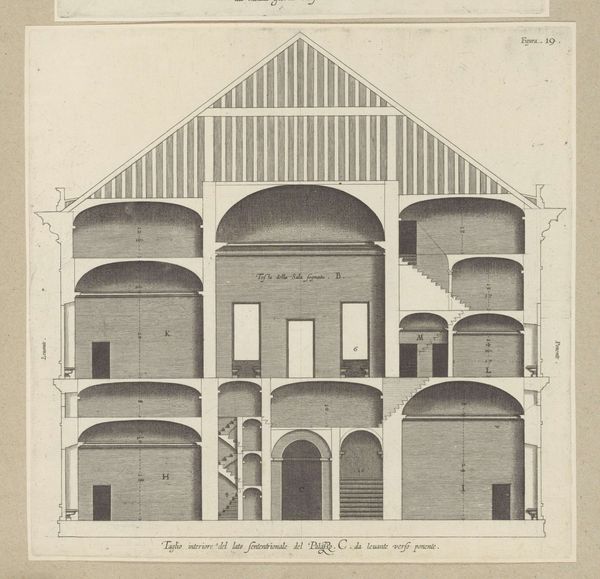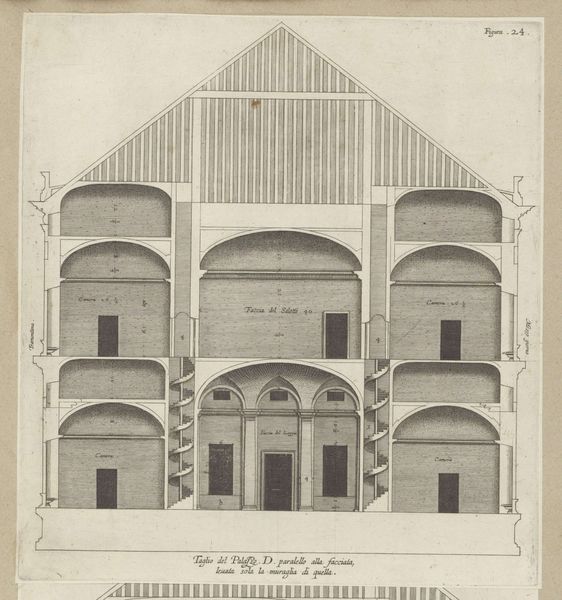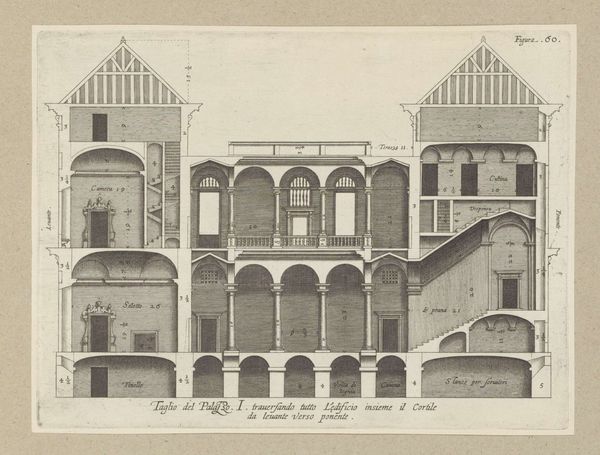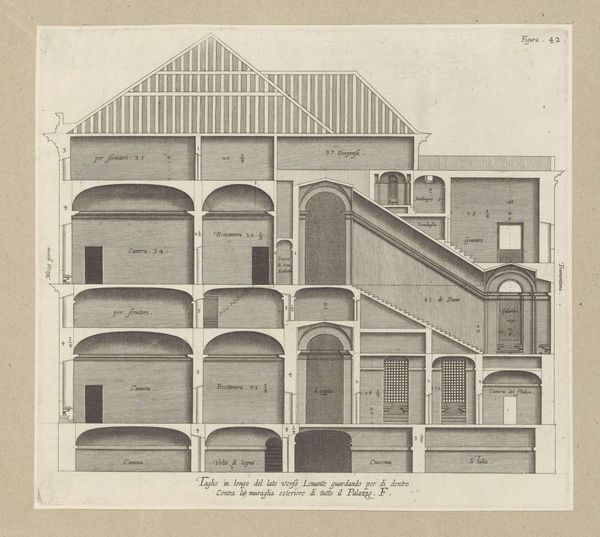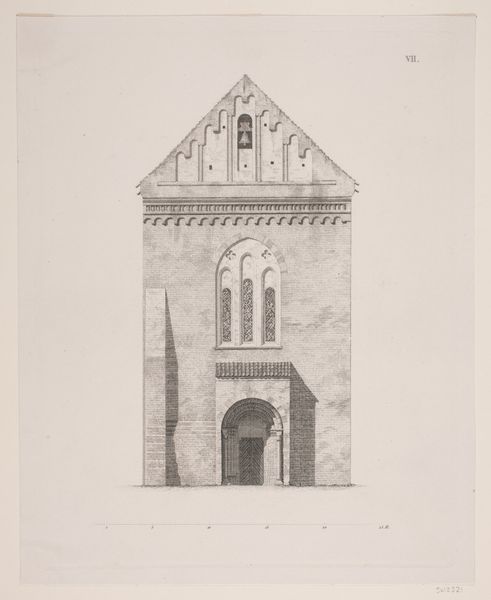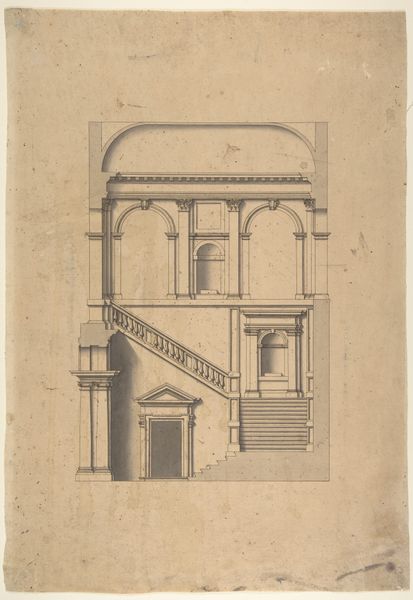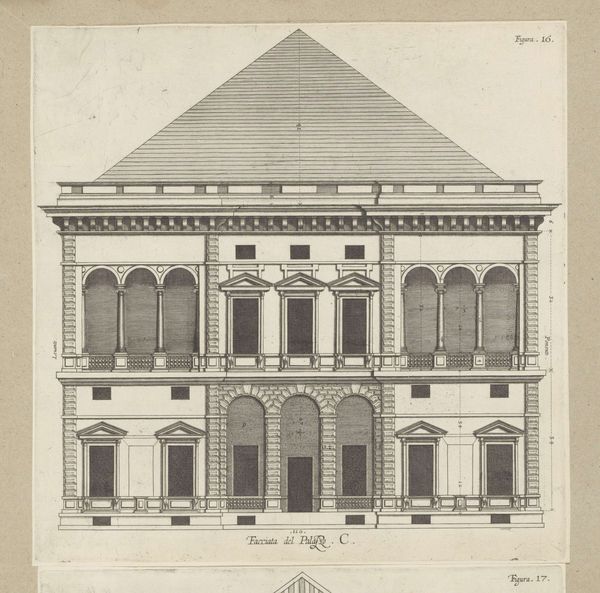
drawing, engraving, architecture
#
drawing
#
baroque
#
geometric
#
cityscape
#
engraving
#
architecture
Dimensions: height 267 mm, width 245 mm, height 583 mm, width 435 mm
Copyright: Rijks Museum: Open Domain
Curator: This is Nicolaes Ryckmans' "Langsdoorsnede van de Villa Spinola di San Pietro te Genua," created around 1622. It's a detailed engraving offering a cross-section of a Genoese villa during the Baroque period. Editor: My first impression is the sheer formality of it all. The geometry is so precise; it feels like looking at an architectural theorem rather than a lived space. The repetitive windows punctuate the scene and lead my eyes down to its foundations. Curator: Indeed, the print medium served a specific purpose then—disseminating architectural knowledge among elite circles and construction trades. These designs were often circulated among architects and patrons as models for contemporary building. Editor: The light, thin lines defining the architectural components highlight the overall form. Even though it is an internal view, there is a curious flatness to the composition that is further reinforced by the hatching of the roof. It makes it challenging to conceive depth or volume within these walls. Curator: The flat rendering serves more as a diagram than an illusionistic image. What interests me most is not necessarily the surface representation, but what this particular architectural style and commission tells us about Genoese society. The Villa Spinola would have served as a very visible emblem of their power and social position. Editor: So the structure embodies the Spinola's place in Genoese society? I guess one can note that there's little human presence in the drawing, directing the viewer to engage instead with a grand idea of order, volume, and control that's built on ratios, rather than one founded in experience. Curator: Exactly, architecture in the Baroque era communicated so much about patronage, wealth, and, importantly, power. It reinforces the relationship between visual representation and the manifestation of authority. Editor: Analyzing the relationship of form to purpose then suggests a fascinating relationship between this plan's diagrammatic clarity, Baroque ideals, and social statement. I see what you mean; the historical layers deepen our appreciation of the building blocks on the page.
Comments
No comments
Be the first to comment and join the conversation on the ultimate creative platform.
